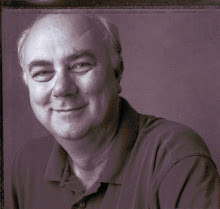Memories of a Caroloregian: the Kingsport
pages
Jean Nicaise
Translator's note: Square brackets [ ]
enclose clarifications or explanations.
[Sic] means the previous word appears as per the original. Italics show
when Nicaise himself uses English.
Segregation
I
tried to understand the attitude of white Americans who did everything they
could to prevent a middle-class black from moving into a "white"
neighborhood. They said it was because the day after tomorrow their property
value would diminish by half. How could you put up with being ruined?
Truth
be told, the newspaper of my little adopted city reported racist excesses so as
to deplore them. Industries such as Eastman Kodak, among others, with
numerous workers and management from the North, had inspired a more broadminded
attitude. In addition, French and Belgian engineers worked at Blue Ridge
Glass Corporation, whose majority stockholders are the French Saint-Gobain
and the Belgian Saint-Roch.
Blacks
made up hardly five percent of the population, since historically agricultural
property was too small to use slaves as laborers, compared with the cotton
states. Rather, they came from Georgia and worked as domestics for the local
bourgeoisie. It wasn't until 1959-60 that the timid beginnings school
integration began. The colored students were admitted gradually,
beginning with the first grade. It wasn't even done this soon in many cities in
the South. Thus, in October, 1962, encouraged by Ross Barnett, the racist
governor of Mississippi, rioters occupied the campus of the university of that
state to prevent access to the premises by James Meredith, the first Black to
be registered there. Two people were killed and 20,000 federal troops were sent
to restore order!
Georgia
became famous a bit later in the rear-guard struggle against integration. In
1964 a certain Lester Maddox, the owner of a fried chicken restaurant in
Atlanta, armed some of his customers with pickaxe handles to hit any
"nigger" who tried to eat at his establishment. It was the same year
(only 30 years in advance of the widely-condemned South Africa) when, finally,
the Civil Rights Act, signed by President Johnson, made official segregation
illegal! In 1966 Maddox, despite his political inexperience, succeeded in being
elected governor! His speeches, both before and after his election, bore the
stamp of segregationist rhetoric; they fortunately were not followed up with
action and did nothing to slow integration. Blackballed during the following
election, he opened a tourist shop in an Atlanta suburb where he sold, among
other things, miniature autographed pickaxe handles.
[In
a footnote to this paragraph, Nicaise writes: Reported by John Shelton Reed and
Dale Volberg Reed, two of my former Kingsport students, in 1000
Things Everyone should know about the South, ed. Baltam [sic] Dell
Publishing Group, Inc, New York, 1996. Their idyll, ended by marriage, had
begun in school …]
Before
the Civil Rights Act, playing fields, sports teams, nurseries, schools
of all levels, and libraries throughout the South rigorously separated the
"races."
[Nicaise
adds a note: I use quotation marks here because the word "races" is
unacceptable. There is "the human race," within which several groups
are differentiated.]
I
went to teach Whites at Dobyns-Bennett High School. For their high
school, Blacks attended Douglas High School, which was clearly
substandard, as we will soon see.
Three
days before back-to-school, set for September 1, the teachers all meet to
prepare. The new ones get acquainted. Speakers come to share their experience.
One of them describes to us in great detail the proper way to use the
blackboard; another tells us how to cut little people out of paper. Have I
somehow come to the wrong school? Have I come to the elementary section by
mistake? No, I am actually at a High school, the upper level of
secondary school.
There
wasn't any segregation at this initial school year get-together. The "colored"
teachers were also invited to Dobyns-Bennett. During our entire stay,
this was the only time that I ever saw such a mix. A black colleague, Oscar
Gill, asked me if I could help him with a new assignment, teaching French. He
already taught music and math, even though his white colleagues were assigned
one or rarely two subjects, as is the case in Europe. He had studied French for
a few months in the course of his own education. I invited him to my house the
following Sunday. He came with his wife, a delightful woman who was also a
music teacher in a colored school. In the meantime I had read into the
microphone of a tape recorder, borrowed from Dobyns-Bennett, all the
content from the textbook we would both use, French for a Modern World.
I wonder how the poor teacher made out because I only saw him again once. I met
him on Broad Street, stopped, shook his hand and asked how the French lessons
were going. He seemed to me to be embarrassed; he very quickly went on his way.
Nevertheless he sent me some examples from his "six week test."
The title was "An exam in French (the sixth week." "Part I : The
vocabulary [misspelled]: give the English." There followed a
list of 30 words (chair, pen, etc.) among which was breakfast [misspelled].
Such spelling!
[Translated from the French by Jud Barry]


0 Comments:
Post a Comment
<< Home